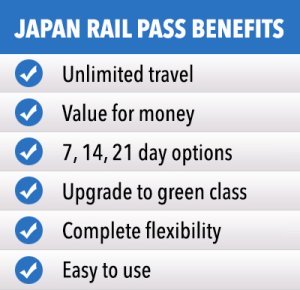7 Day Pass – History Itinerary
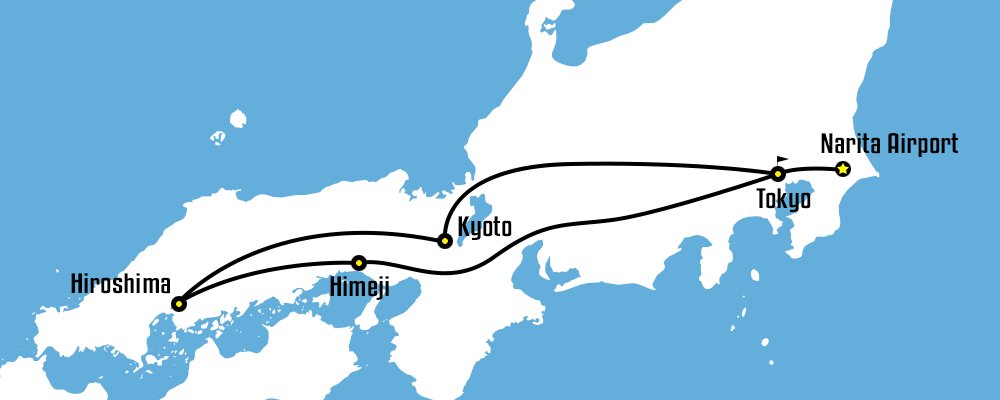
If you have a 7-day Japan Rail Pass and want to visit some of Japan’s best historical attractions, here is an itinerary suggestion to guide you on your trip:
Day 1: Narita Airport to Tokyo
If you are flying in to Narita Airport, you can immediately exchange your Japan Rail Pass voucher at the JR Ticket Service Centers found at Terminal 1 and Terminal 2 of the airport. Set its activation date to that same day so that you can use it to ride the Narita Express to Tokyo.
Day 2: Tokyo
Once in central Tokyo, you can check out some historical attractions found around the JR Yamanote Line, such as the old and beautiful gardens of the Imperial East Gardens and Koishikawa Korakuen; the ancient Yasukuni Shrine, which was founded in 1869; and the Imperial Palace, which you can only visit by submitting an online application in advance through the Tokyo Imperial Palace website.
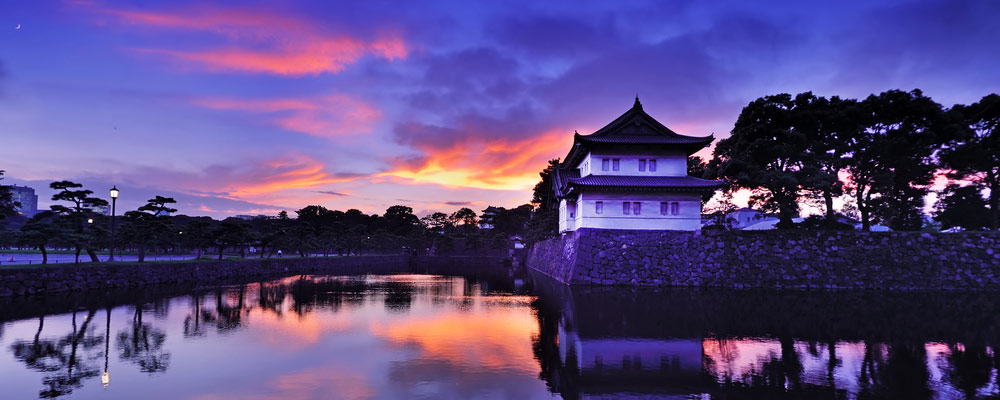
Day 3: Tokyo
Asakusa, found in the northern part of Tokyo, is among the most popular historical districts in Japan. To get there, use your JR Pass and take the JR Yamanote Line to Ueno Station and walk for about 20 to 30 minutes. It is home to many sites and buildings built during the Edo Period, as well as centuries-old shrines (Asakusa Shrine) and temples (Sensoji Temple and Dempoin Temple).
After exploring Asakusa, you can take in a few museums in the city, such as the Edo-Tokyo Museum (accessible via the JR Sobu Line and a five-minute walk from JR Ryoguku Station); and the Tokyo National Museum (accessible via the JR Yamanote and JR Keihin Tohoku Lines and only a 5-minute walk from Ueno Station).
Day 4: Tokyo to Himeji to Hiroshima
Himeji is home to the Himeji Castle, which is arguably the most beautiful, well-preserved feudal castle in Japan, and it can be reached from Tokyo by using your JR Pass and taking a Shinkansen from Tokyo Station to Himeji Station. The one-way journey takes about 3.5 hours. Spend a few hours in the city to check out the castle, which is only 1 kilometre from the station, and the Kokoen Garden, which is found right next to it.
In the afternoon, using your JR Pass, head to Hiroshima by taking a 1-hour Shinkansen ride from Himeji Station to Hiroshima Station. The Hiroshima Peace Park, Shukkeien Garden, Hiroshima Castle and Mazda Museum are all located in the downtown area, just a few minutes’ walk from the station, so you can visit them as soon as you arrive.
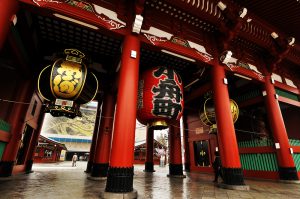
Sensoji Temple – Tokyo
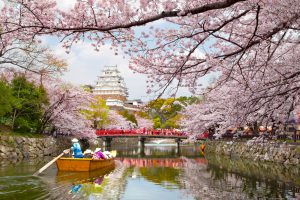
Himeji Castle and Cherry Blossoms
Day 5: Hiroshima to Kyoto
From Hiroshima, the fastest route to Kyoto is via Shin-Kobe. At Hiroshima Station, take a Shinkansen to Shin-Kobe Station and then transfer to another Shinkansen to Kyoto Station. The whole trip takes a little over 2 hours and is fully covered by the JR Pass.
Upon arriving in Kyoto, check out the Kyoto Aquarium, Nijo Castle and Kyoto Tower
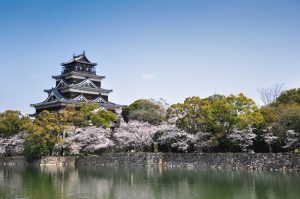
Hiroshima castle

Shinkansen in Japan
Day 6: Kyoto
Kyoto has a long list of historical and world heritage attractions on offer, so you will not run out of things to do.
In Eastern Kyoto, you can find the Kiyomizudera Temple, Ginkakuji Temple, Nanzenji Temple, Kodaiji Temple, Eikando Temple, Heian Shrine and Yasaka Shrine.
In Southern Kyoto, you can visit the Fushimi Inari Shrine, Daigoji Temple, Toji Temple and Tofukuji Temple. In Central Kyoto, there are the Nijo Castle, Kyoto Imperial Palace and Honganji Temples.
In Northern Kyoto, you’ll find the Kinkakuji Temple, Ninnaji Temple, Ryoanji Temple, Kamo Shrines, Daitokuji Temple, Kitano Tenmangu, Manshin Temple and Enkoji Temple.
In Western Kyoto, you can explore the Arashiyama district, take the Sagano Railway sightseeing train or go on a Hozugawa cruise.
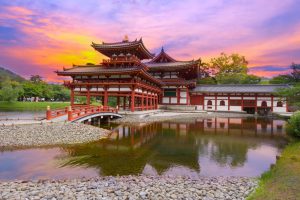
Uji, Kyoto, Japan

Tourist at Arashiyama bamboo forest
Day 7: Kyoto to Tokyo
To go back to Tokyo, take a Shinkansen from Kyoto Station to Tokyo Station. The trip is fully covered by your JR Pass and takes around 2.30 – 3 hours.






